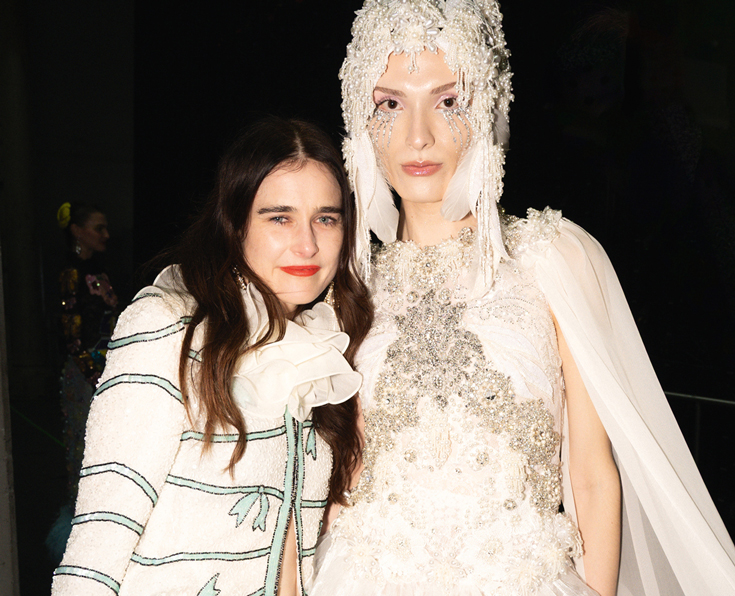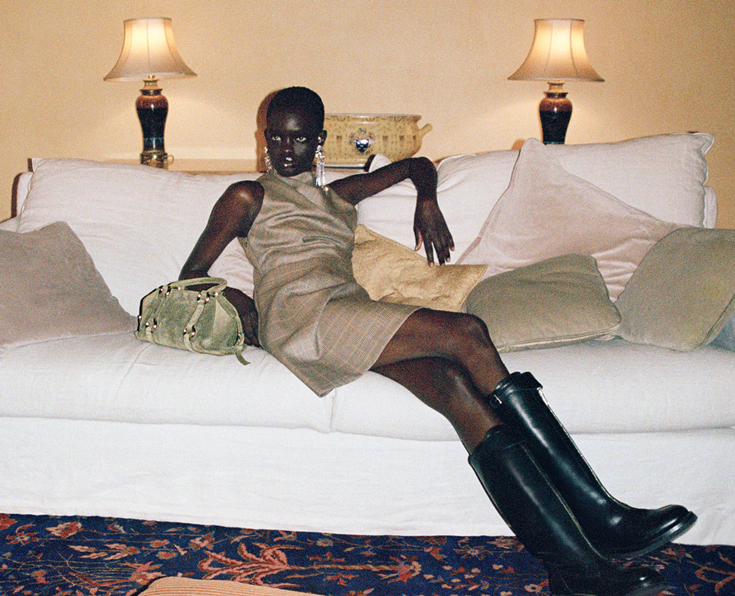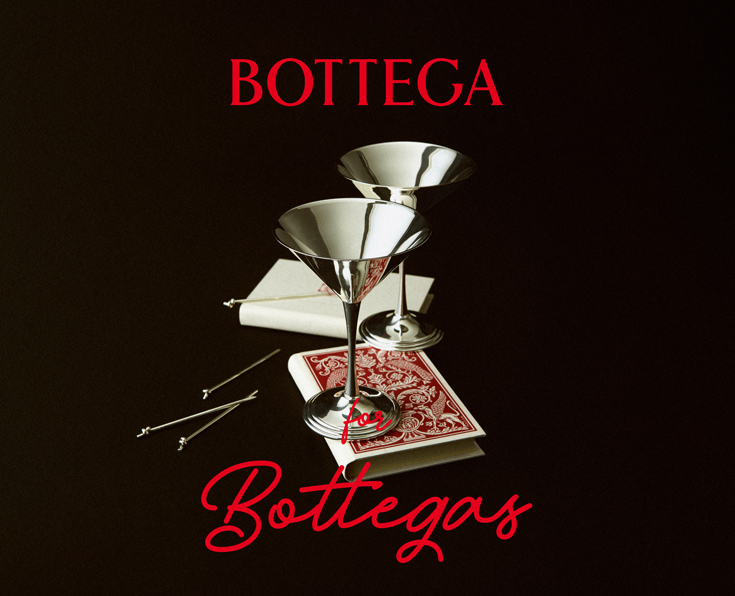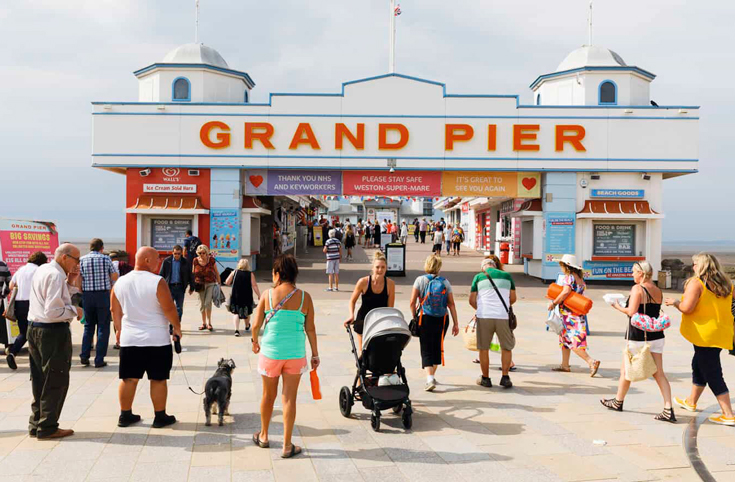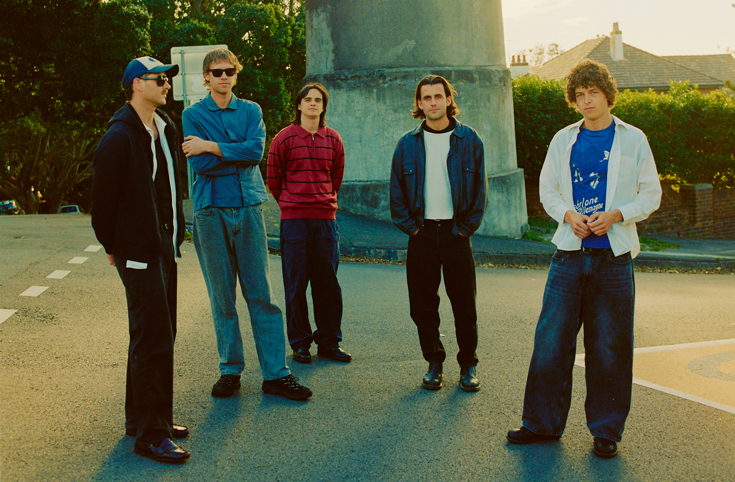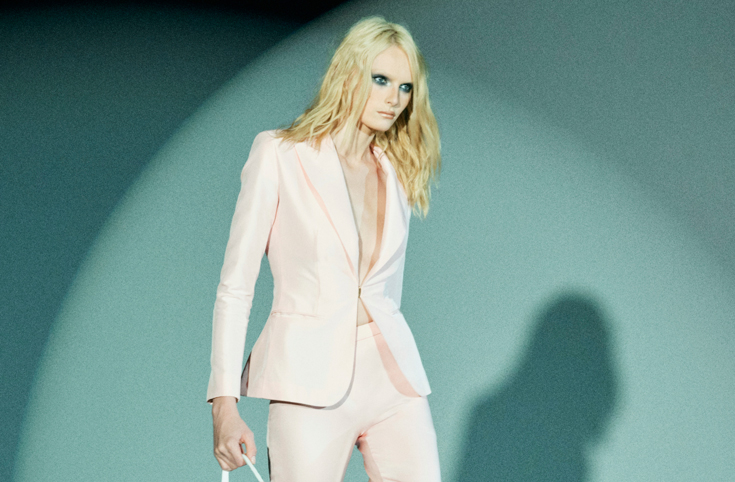IMAGINING A BETTER FASHION FUTURE
Imagine if your clothes could grow as you wore them, soaking up carbon dioxide as you walked through the city streets. Imagine walking into a boardroom meeting where Mother Nature has a seat at the decision-making table and the ability to say no if rivers are being polluted or soils stripped of their nutrients so that there is nothing for the worms to wiggle through. Imagine if the underground world of grubs, bacteria, microbes and mycelium spreading its tentacles everywhere we walk took control and forced us to stop producing virgin polyester to make throwaway clothes or opening up new oil fields. Imagine if we stopped extracting fossil fuels now, instead of when it’s too late.
I’m taking some advice from Georgina Johnson, the brilliant editor of The Slow Grind, a publication with a mission to create a new blueprint for a more sustainable, healthy, accessible, creative work life. The second volume has recently been published with the title Practising Hope and Imagination. It’s a series of conversations and essays that dream and think about the future. “If you do nothing else,” Johnson writes in her essay ‘Audacious Hope’, “step into your imagination, welcome your healing, stay curious about the things hidden within you, and envision the future you want to be in and your place in its creation.”
So, instead of writing this piece (sorry, ed) I’m taking some time to stop and listen. Alice Coltrane’s 1971 album Universal Consciousness is what some might call cosmic jazz. You have to tune into it and let it take you places. According to Johnson, who founded her agency Laundry Arts in 2017 as a way to make connections with the art and creative worlds when the doors seemed firmly closed, Coltrane’s music “requires sitting still and listening deeply. Doing either will produce visions, clarity and an eagerness to be in sync with the divinity of our home.” Who doesn’t need a bit of clarity in their lives right now? It’s important to take a pause and step away from the daily grind. Johnson says ultimately she desires for “more of us, and particularly those of us across the diaspora, to see the climate crisis as a collective issue, one where we can apply the mantra of: ‘You Touch One, You Touch All.’”

Practising Hope and Imagination is her series of conversations and essays that dream and think about the future. One of the five Slow Grind principles is “encouraging dreaming, imagination and hope so that all communities can thrive”. Another is “addressing a history of destruction and oppression” and “viewing the interconnectedness of climate and social justice through the lens of creativity”.
To see the interconnectedness of things – race, gender, the environment and communities – sometimes requires a leap of the imagination. It’s so easy to get stuck in a place and not see the bigger picture. Increasingly, however, there is a generation of fashion designers, bio-textile pioneers, farmers, activists, thinkers and makers like Johnson who are making those connections. Sisters Tina and Piarvé Wetshi formed Colèchi in 2018, a research agency and think tank with a focus on sustainability and fashion. Tina has worked in PR with luxury brands including Bottega Veneta, while Piarvé also runs The Last Yarn, a marketplace for surplus fabrics. They are on a mission to bring together people who are trying to find solutions across a range of fashion industry challenges. Their most recent project Agreenculture is a book looking at the relationship between fashion and farming. Like The Slow Grind, it brings together pioneers, entrepreneurs and innovators to show how different the industry could be with a little imagination and vision.
Agreenculture is not a rose-tinted vision of some happy-clappy utopia. Tina describes the journal’s findings as “very real and very raw. It’s meant to give reality and positivity that things are happening – people are doing things.” Their role is to support those communities, farmers, biodesigners, natural dyers and activists and give them a space where their stories can be shared with each other as well as the wider world. As she says, “you’re allowing people to share their aspirations, to share their dreams and to share their ideas”.
Take Canadian designer Olivia Rubens, who creates clothes that photosynthesise like plants. “Imagine if your clothes offset their emissions used in creation as you wore them,” writes Rosie Tretheway of Rubens. “Imagine if they behaved like plants, and by wearing them the city streets became living urban forests.” Or how about the East Midlands-based material science company Osmose Studio, whose mycelium, i.e. plant-based, leather Mykkö is entirely compostable? In another scenario, trainers are no longer made from petrochemicals but are woven from bacteria by the London-based biomaterial pioneers Modern Synthesis. This reimagined fashion future puts nature at the centre of everything. As Tina writes in her essay ‘Nature as a Stakeholder’, we are at a crossroads and “must now let nature into our capitalist ways”. In 2022, the beauty brand Faith in Nature legally appointed ‘Nature’ to its board of directors to ensure that her rights are protected. “Thinking about nature as a collaborator that can inform our design practice to make new materials or new structures is very enticing,” says author Clare Press, founder of the Wardrobe Crisis podcast. Her latest book Wear Next: Fashioning the Future was born out of what she describes as a “crisis of imagination when it came to seeing a beautiful future that I can get behind”. As she sees it, human beings are predisposed to catastrophise. “Because of our 24-hour news cycle, and addiction and doom-scrolling, we’re always looking at what’s wrong next, and is the world going to end tomorrow, and look at war! And look at climate change! We have to be aware of these things, absolutely. But I think that one of the side effects of that has been that we have lost the habit of taking time to dream.”

Wear Next is the result of researching some of the people who are setting a different course, ignoring the existing hierarchies, turning stuff on its head, just asking… what if? “I set out to imagine a future for fashion that we could get behind and get excited about,” Press told me over Zoom from her home in Sydney. She writes about robots, co-designing with nature, biodesign, tech startups that repair your clothes and AI. Each of her chapters starts with a dream scenario, “IMAGINE: Nothing useful goes to waste,” begins the section on upcycling,“… the majority of our clothes are made by reimagining what’s already here.”
Press interviews some of the visionaries who made a leap of faith and put their dreams into action, like Cyndi Rhoades, whose business Worn Again is the result of her dream to build a system that separates synthetics from natural fibres to enable the mix of textiles in our clothes to be recycled and reduce the need for virgin ones. She talks to Eshita Kabra-Davies, founder of By Rotation, the clothing rental pioneer that lets users rent out their wardrobes to other members of the community. Kabra-Davies developed her idea while travelling on her honeymoon, which goes to show the best ideas happen when you least expect them. Or there’s Dian-Jen Lin, the co-founder of east London-based Post Carbon Lab whose vivid imagination led her to develop friendly bacteria that react and create living colours that might change with your mood – her approach makes a fixed solid colour, which is completely uniform from one dress to the next, seem positively last century. Why wouldn’t you want the colours in your clothes to be as alive and unpredictable as they are in the natural world?
All of these new ideas and smart solutions will not suddenly happen overnight. “If we’re going to dream of an amazingly beautiful fashion future, we have to factor in not just the health of the planet, but the health of workers and our mental health, and all of those different parts of the puzzle that feed into making the opposite of what we’ve got now,” says Press. We need to be patient even though we know we have so little time. “It takes time to dream up a beautiful alternative to what we’re doing now,” she says. “You can’t do it quickly. It’s a muscle you’ve got to develop. And it takes dedication and time.”
And this is the point. In order to develop the next generation of solutions that will help us get out of the mess, we need time to dream a little, let our imaginations find the spaces they need to percolate. We need time to talk, see new things, read, listen to some Alice Coltrane and zone out from the doom spirals and knotty ruts we get stuck in. It’s also about hope and optimism.

“A lot of climate change conversations feel very helpless,” says Tina. “We leave thinking: we have such a long way to go. And sometimes you’ve got to use your imagination and think of things that feel quite important… big-picture thinking, and then come back down and think smaller. Suddenly your imagination opens up and people are then able to connect their own dots or make up their own stories around it.” Of course, to move forwards, we need data collection, science, legislation, statistics and some serious hard rethinking of current economic systems, power imbalances, inequalities and hierarchies. But we also need creativity, time to lie back and stargaze. “There’s a missing bit,” says Press. “And I actually think the missing bit is probably to sit under a tree for a long time and dream.”
Taken from 10 Magazine – DARE TO DREAM – out now!

